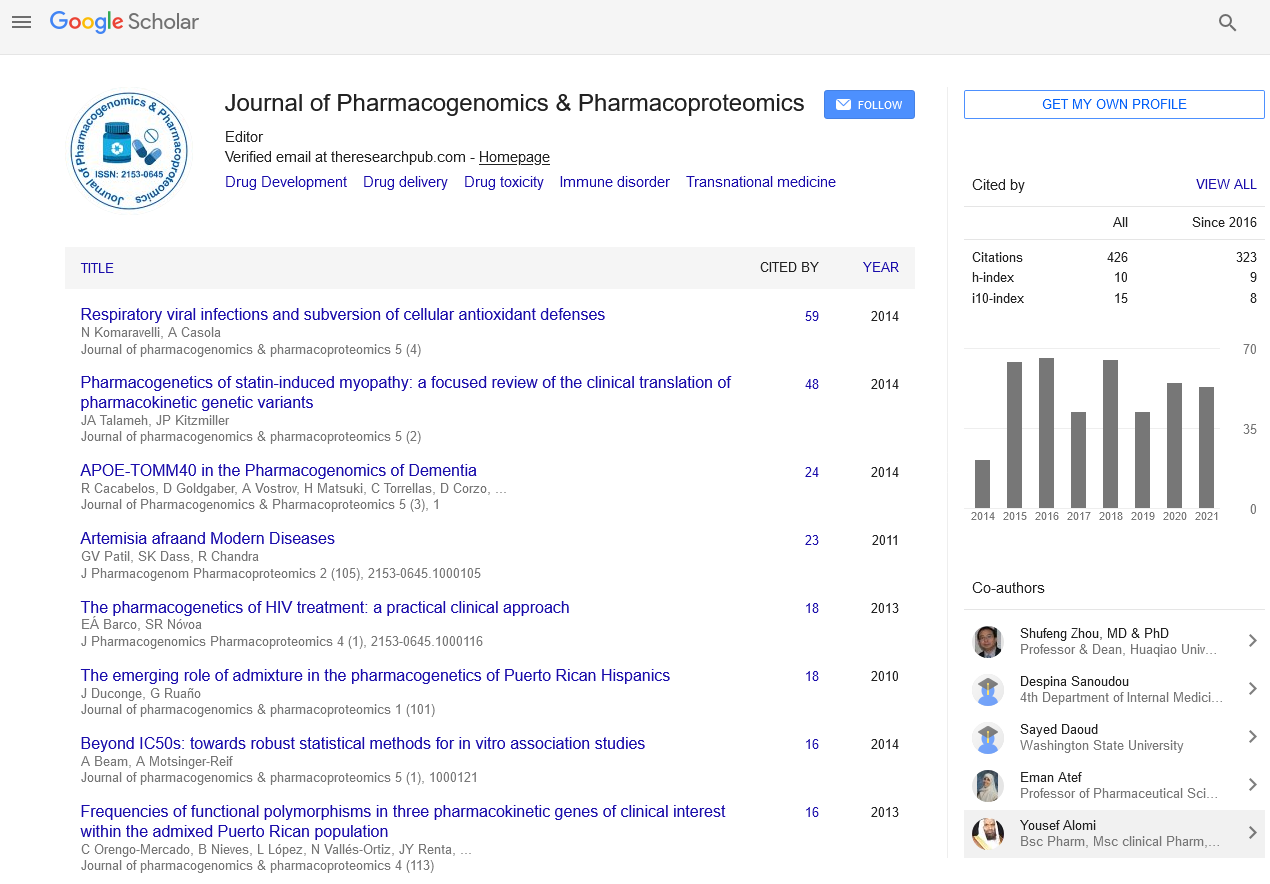Indexed In
- Open J Gate
- Genamics JournalSeek
- Academic Keys
- JournalTOCs
- ResearchBible
- Electronic Journals Library
- RefSeek
- Hamdard University
- EBSCO A-Z
- OCLC- WorldCat
- Proquest Summons
- SWB online catalog
- Virtual Library of Biology (vifabio)
- Publons
- MIAR
- Euro Pub
- Google Scholar
Useful Links
Share This Page
Journal Flyer

Open Access Journals
- Agri and Aquaculture
- Biochemistry
- Bioinformatics & Systems Biology
- Business & Management
- Chemistry
- Clinical Sciences
- Engineering
- Food & Nutrition
- General Science
- Genetics & Molecular Biology
- Immunology & Microbiology
- Medical Sciences
- Neuroscience & Psychology
- Nursing & Health Care
- Pharmaceutical Sciences
The utility of five color primary screening antibodies panel used in flowcytometric immunophenotyping of acute leukemia
2nd International Conference on Predictive, Preventive and Personalized Medicine & Molecular Diagnostics
November 03-05, 2014 Embassy Suites Las Vegas, USA
Pranay Tanwar, Amar Ranjan Singh and Ritu Gupta
Scientific Tracks Abstracts: J Pharmacogenomics Pharmacoproteomics
Abstract:
Summary: The diagnosis of acute leukemia is based on morphology, cytochemistry, cytogenetics and immunophenotyping. Primary screening antibodies panel is used with the objective of stratifying the lineage followed by extensive secondary antibodies panel to reach a conclusive diagnosis. In this study the diagnostic utility of primary screening antibodies panel has been evaluated retrospectively based on the final immunophenotype. Aims and Objective: To evaluate the diagnostic utility of five-color primary screening antibodies panel used in flowcytometric immunophenotyping of Acute Leukemia. Method and Material: A total of 292 diagnosed cases of Acute Leukemia from Jan 2013 to Aug 2014 were included in this study. All these cases were stratified to lineages with primary screening antibodies panel comprising of cytoplasmic myeloperoxidase (MPO), cytoplasmic 79a (c79a), CD34, cytoplasmic CD3 (c3) and CD45.Once the lineage has been stratified, then extensive secondary panel with more specific marker of myeloid, B-ALL and T-ALL were used to reach thefinal diagnosis. Results: Of all the cases (292) evaluated 235(81%) were sucessfully identified on primary screening panel only , 57(19%) cases failed to show any specific lineage in primary screening panel. These 57 cases included 31/125(25%) AML, 22/131(17%) B-ALL and 4/36(11%) cases of T-ALL. Conclusion: The five-color primary screening antibodies panel is proved useful in identify the correct lineage in 81% of cases. The absence of lineage specific marker was the most common reason for failure of the predictive power of the primary panel.


